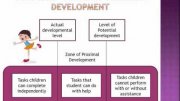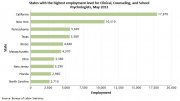
I define "sensory marketing" as ". marketing that engages the consumers' senses and affects their perception, judgment and behavior." From a managerial perspective, sensory marketing can be used to create subconscious triggers that characterize consumer perceptions of abstract notions of the product (e.g., its sophistication or quality). Given the gamut of explicit marketing appeals made to consumers every day, subconscious triggers which appeal to the basic senses may be a more efficient way to engage consumers. Also, these sensory triggers may result in consumers' self-generation of (desirable) brand attributes, rather than those verbally provided by the advertiser. The understanding of these sensory triggers implies an understanding of sensation and perception as it applies to consumer behavior-this is the research perspective of sensory marketing. This review article presents an overview of research on sensory perception. The review also points out areas where little research has been done, so that each additional paper has a greater chance of making a bigger difference and sparking further research. It is quite apparent from the review that there still remains tremendous need for research within the domain of sensory marketing-research that can be very impactful. © 2011 Society for Consumer Psychology.
In four experiments, this research sheds light on aesthetic experiences by rigorously investigating behavioral, neural, and psychological properties of package design. We find that aesthetic packages significantly increase the reaction time of consumers' choice responses; that they are chosen over products with well-known brands in standardized packages, despite higher prices; and that they result in increased activation in the nucleus accumbens and the ventromedial prefrontal cortex, according to functional magnetic resonance imaging (fMRI). The results suggest that reward value plays an important role in aesthetic product experiences. Further, a closer look at psychometric and neuroimaging data finds that a paper-and-pencil measure of affective product involvement correlates with aesthetic product experiences in the brain. Implications for future aesthetics research, package designers, and product managers are discussed. © 2010 Society for Consumer Psychology.
In four studies in which consumers assembled IKEA boxes, folded origami, and built sets of Legos, we demonstrate and investigate boundary conditions for the IKEA effect-the increase in valuation of self-made products. Participants saw their amateurish creations as similar in value to experts' creations, and expected others to share their opinions. We show that labor leads to love only when labor results in successful completion of tasks; when participants built and then destroyed their creations, or failed to complete them, the IKEA effect dissipated. Finally, we show that labor increases valuation for both "do-it-yourselfers" and novices. © 2011 Society for Consumer Psychology.
Source: www.journals.elsevier.com
You might also like:




















